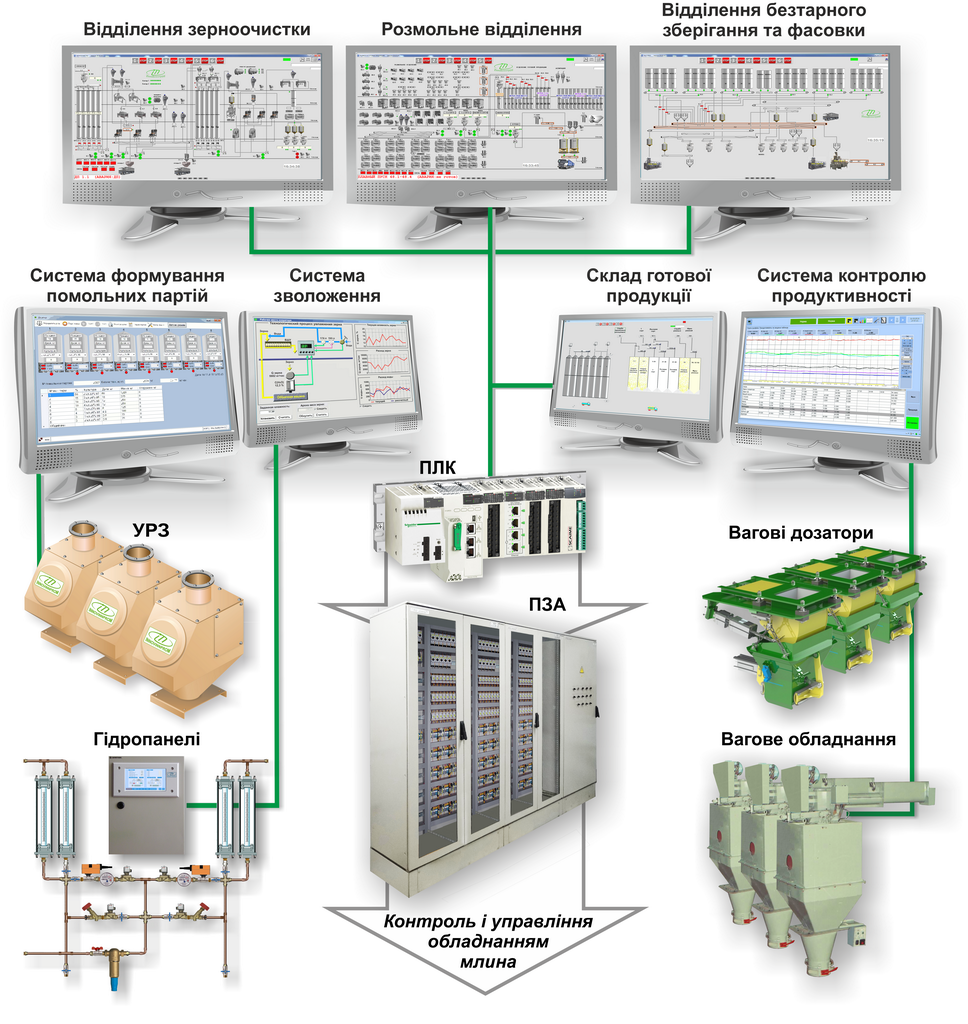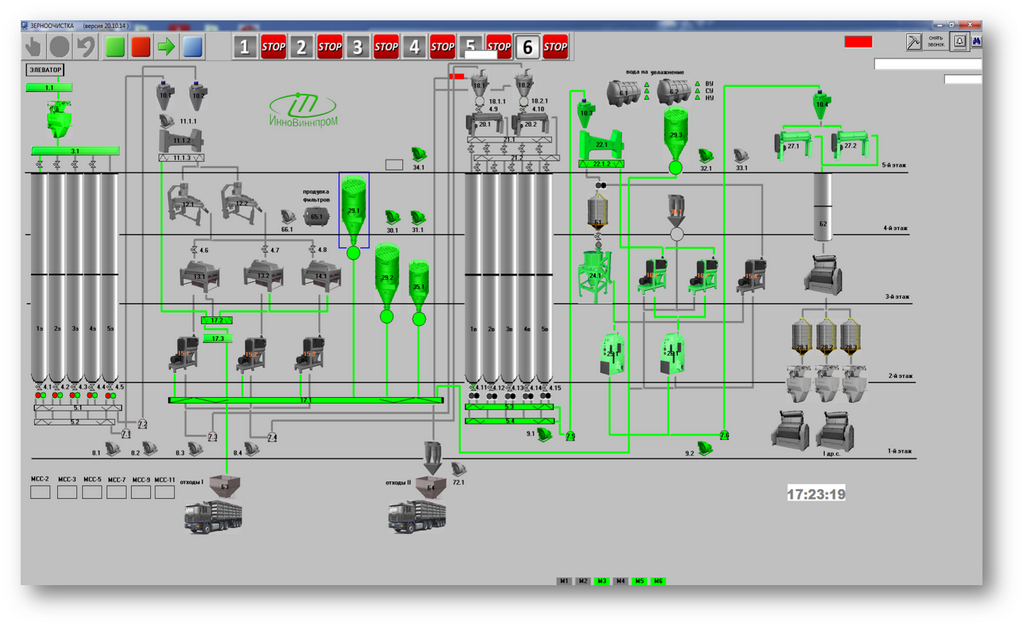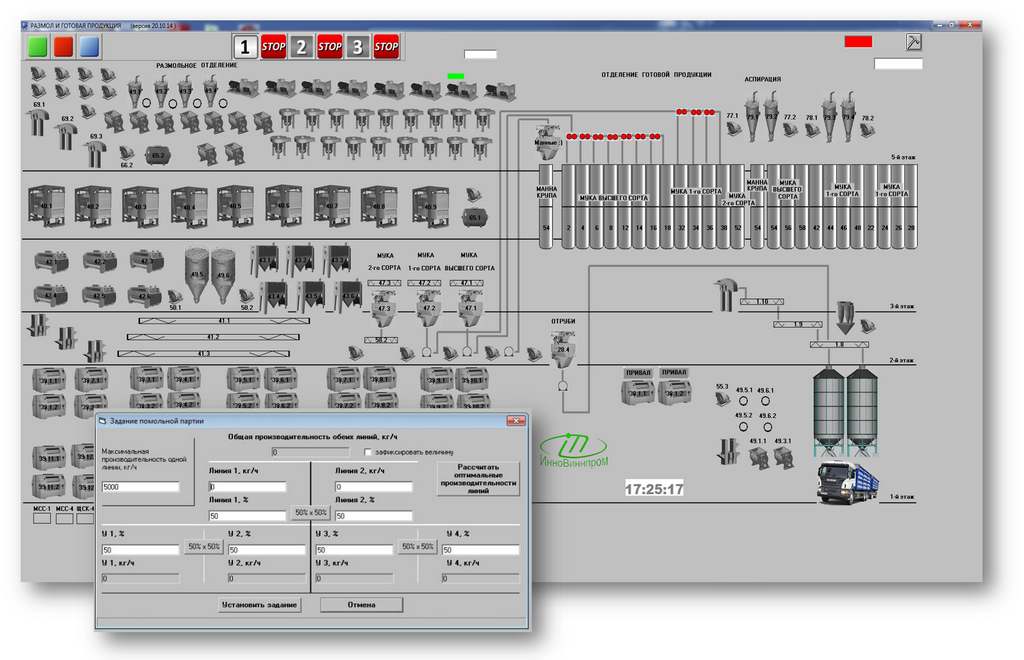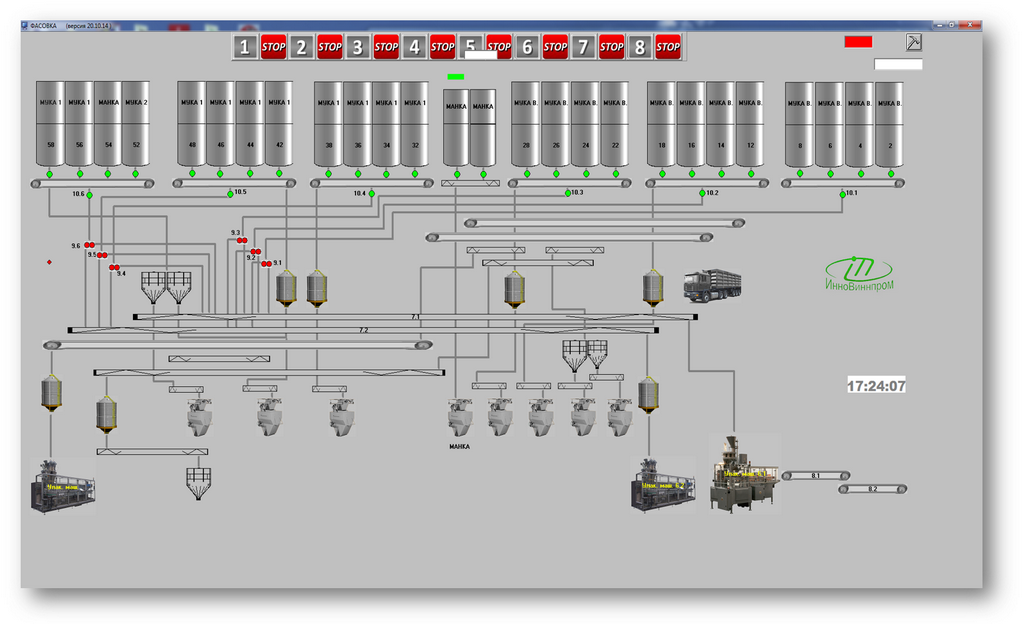Automation of production at mills
The system of remote automated control of the mill (RACS -M) is intended for the automation of the processes of cleaning, moistening and grinding of grain, weighing and packaging of finished products at mills. The system provides automatic control of equipment operation, accounting for necessary technological delays, compliance with technological algorithms.
The use of RACS-M allows you to significantly increase the productivity of the mill and reduce economic losses due to the elimination of personnel errors when working with the equipment and the reduction to a minimum of technological delays when turning on / off the equipment, reducing the reaction time of the system in the event of an emergency situation.
RACS-M provides accounting of the working hours of each unit of equipment.
To support the operation of the implemented RACS-M, the INNOVINNPROM service support system system has been implemented, which provides the possibility of prompt remote resolution of issues of modernization of technological schemes, updating of all levels, overcoming emergency situations without the developer's representatives visiting the facility.
 Structure of RACS-M
Structure of RACS-M
When building systems for remote automated control of the mill, the following basic principles, developed on the basis of many years of successful implementation, are taken into account:
- high system reliability;
- system modularity;
- repeatability during implementation;
- the shortest terms of implementation;
- ease of setup and maintenance.
Programmable logic controllers (PLCs) perform the functions of equipment management, control of its condition and processing of emergency situations.
PLC software uses typical algorithmic modules (functional blocks) for the main types of executive devices and typical control tasks. Therefore, when implementing an automation object, the programmer's task is reduced to the adaptation of the PLC software to the object's specific equipment by adjusting the existing functional blocks.
During the construction of RACS-M, the possibility of using up to 32 PLCs at the same time is envisaged. This architecture has a number of advantages compared to a classic single-processor system:
- higher reliability of the system due to the distribution of the structure (territorially by WP, functionally by loading / unloading, type of storage, etc.);
- there is practically no limit on the number of input / output channels;
- the cost of the system is lower due to the reduction of the cost of the PLC and the reduction of labor costs for its programming (as a rule, a non-functionally saturated, easy-to-program PLC with minimally sufficient technical parameters is used).
The safety equipment includes frequency drives, soft starters of electric motors, circuit breakers, automatic switches, magnetic starters, control and protection relays, fuses, control buttons and push-button stations, cam and packet switches and switches, signal lamps, etc. to be installed both individually and in complete stations, panels and control panels for both separate machines and aggregates, as well as entire technological lines.
Typical connection and control schemes made in accordance with the requirements of the standards are used to connect the equipment.
APMO "Grain Cleaning"
APMO is designed to control the equipment of the grain cleaning department
Main functions of APM:
- Selection of grain cleaning options by enabling/disabling grain movement routes or separate mechanisms
- Automatic formation of routes and control of grain movement
- Control of the serviceability and modes of operation of the equipment, blocking of emergency situations

APMO "Grinding"
APMO is intended for control of milling equipment
Main functions of APM:
- Selection of grain grinding options by turning on/off mechanisms
- Product output control
- Control of the serviceability and modes of operation of the equipment, blocking of emergency situations

APMO "Department of finished products and packaging"
APMO is designed to manage warehouse and packaging equipment
Main functions of APM:
- Automatic formation of routes for moving finished products to packaging and shipping equipment
- Traffic control and product shipment management
- Control of the serviceability and modes of operation of the equipment, blocking of emergency situations



 Glyanec
Glyanec